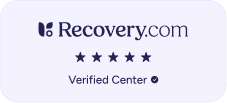Opioid-related drug overdoses have quadrupled since 1999. In fact, over 70% of drug-related deaths in 2019 involved an opioid. This is what’s referred to as the opioid epidemic, the severe increase in opioid use, addiction, and subsequent death.
Because the levels of opioid use are so high, it’s statistically likely that you or someone you love struggles with drug addiction. Addiction to opioids can be fatal, resulting in a lethal overdose.
Many addicts cite hitting rock bottom as the turning point for their recovery. But how is it possible to hit rock bottom and recover, if the process is fatal? This is where naloxone comes in.
Naloxone can help prevent opioid overdoses, and save lives. It’s recommended that if you’re at risk of overdose, or are around someone who’s at risk, you should carry it at all times. If you’re interested in learning more about naloxone, read on to learn more about this drug.
How Does an Opioid Addiction Form?
Opioids activate receptors in the brain, causing a dopamine surge, or intense feelings of pleasure. This is similar to how your brain’s reward system works. Essentially, every time you consume opioids your brain is rewarded with pleasure, pain relief, and euphoria.
Over time, your body builds up a tolerance, meaning greater and greater doses are required for the same effect. This is a sign of physical dependence on the drug and addiction.
What Happens During an Overdose?
Opioids are depressants, meaning they slow the central nervous system or CNS. Your CNS controls all reflexive functions, like breathing and heartbeat.
Opioids depress the CNS, and an overdose occurs when the opioids slow the CNS too much. The heart and respiratory function become dangerously slow or stop, resulting in death.
How Does Naxolone Work?
Naloxone is administered either via a nasal spray or an injection. Naloxone blocks and even reverses the effects of opioids. It’s therefore considered an opioid antagonist.
Naloxone particles attach to the same receptors as opioids, without the same physical effects. Furthermore, it’s more attracted to the receptor than opioids, so it immediately removes the opioid particles from the receptors and replaces them.
In this process, naloxone reverses the effects of an overdose. As naloxone removes the opioid particles from the receptors, the receptors stop depressing the CNS. This allows the heartbeat and breathing to return to normal.
How Long Is Naloxone Effective?
Naloxone starts to work within a few minutes, clearing out the opioids from the receptors and blocking them. The block remains in place for between 30 to 90 minutes.
Immediately after an overdose occurs, administer Naloxone, and then call emergency services. The emergency services will have time to arrive while the opioid receptors are blocked, and can provide expert help. At the very least, medical personnel will monitor vital signs to ensure breathing doesn’t slow down.
Most likely, an individual who overdoses will still have to go to the hospital. Depending on the number of opioids consumed, after the naloxone wears off the overdose can begin again as the remaining opioid particles re-attach to the receptors.
Unlike opioids, no one builds a tolerance to naloxone. One of the benefits of naloxone is that it’s effective regardless of someone’s history of use.
How Should Someone Be Monitored After Naloxone?
Continue to monitor the individual after administering naloxone until emergency personnel arrives. If you’re trained, continue to offer rescue breathing.
Remain vigilant. Naloxone wears off between 30 to 90 minutes, and you might have to administer another dose. If breathing slows significantly or signs of an overdose come back, administer another dose and continue to monitor the individual until help arrives.
How Can Naloxone Be Obtained and Stored?
Many pharmacies allow anyone to buy naloxone without a prescription. You can ask your local pharmacies if they dispense naloxone over the counter.
Other organizations provide the drug and training on how to use naloxone. An organization, Get Naloxone Now can help you locate Naloxone and the relevant training in your area.
The condition of naloxone helps maintain its effectiveness. Store naloxone in a dark, dry place at room temperature. Be sure to check the expiration date, and replace it when it expires.
If you or someone you love suffers from addiction, it’s wise to have Naloxone on hand in event of an overdose. It’s generally easy to obtain, and it’s better to have it and not need it than to need it and not have it.
What Should Happen After an Overdose?
After surviving an overdose, the fight is not over. An overdose is simply a major warning sign that addiction to opioids is out of control. After an overdose, opioid rehabilitation should be strongly considered.
Addicts are shown to have a strong inclination to relapse, especially as they try to go through detox. During this time, it’s best to withdraw from opioids under medical supervision. Medical professionals can ease the withdrawal symptoms and curb drug-seeking behavior, making you more likely to stick with the program.
Furthermore, many opioid addictions begin as a coping mechanism for stress or mental health symptoms. Detoxing from opioids leaves vulnerable former addicts without replacement coping mechanisms.
Inpatient and subsequent outpatient therapy and support can replace opioids with healthy coping mechanisms, leaving you free to enjoy life without addiction.
Take Control of Your Addiction Today
Naloxone is great to have on hand. It one of the best opioid overdose solutions and can save lives. However, if you or your loved ones experience an overdose or are worried about one, it’s best to seek expert care.
Naloxone is only a temporary fix, and the best treatment for opioid addiction is rehab. If you’re ready to take control of your addiction and enjoy addiction-free living, reach out to New Leaf Detox and Treatment in San Juan. We’ve seen it all and can help you with your journey to find sobriety!




